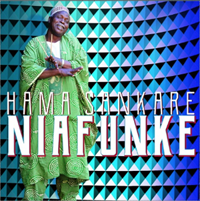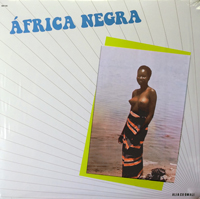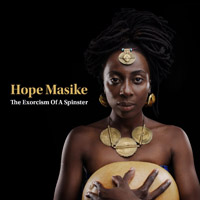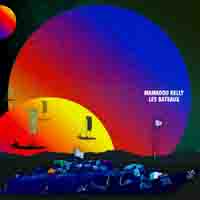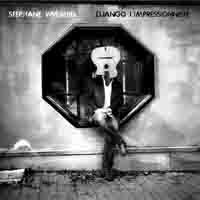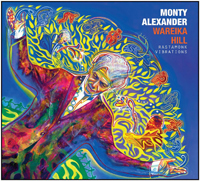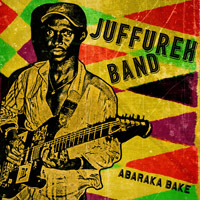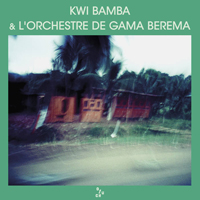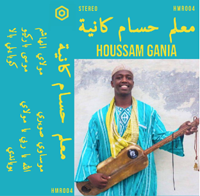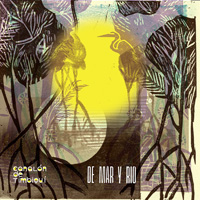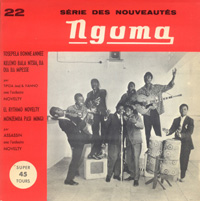The Top Ten Reissues of 2019
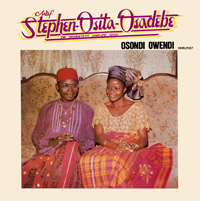
|
CHIEF STEPHEN OSITA OSADEBE
OSONDI OWENDE (Hive Mind)
The hand-lettered banner for this LP attempts to create a logo for the artist and adds the subtitle, "The Consistent Highlife King" which is rather modest but certainly speaks the truth about Chief Stephen. His numerous albums feature a long track on each side: at some point it breaks down to talking drums and other percussion and then the guitars start to wind back in with wahwah and perhaps the backing harmony singers turn the melody around a bit, then Chief Stephen comes back singing in his warm musing voice and for another fifteen minutes all is right with the world. Maybe a muted trumpet steps up to solo. Consistent yes and consistently great. First released in 1984, this disc by the Sound Makers International was hailed immediately as a masterpiece in Nigeria and beyond. It's the summation of all of their finest ideas: the Chief's slightly haranguing world-weary vocals are a litany of Igbo aphorisms over a soothing blend of guitars and percussion. It doesn't build to a climax, it merely subsumes you in its warmth. Stephen O. Osadebe started out in the late 40s in Lagos as a nattily attired Nat King Cole-style crooner. After the devastating Biafran civil war in the 60s Nigeria tried to regain its composure and its prominence as an economic force in West Africa. Many bands turned to the USA for inspiration, even while international corporations sucked out the oil from under their feet. Bucking the trend towards Western-style music, Osadebe kept on crooning and promoting his laid-back drawn-out groove in album after album, and they are all dreamy and superb. He toured the US 20 years ago and recorded a fine album called Kedu America, benefitting from better studio facilities. But of the homegrown discs, this may be his finest hour. ·
|
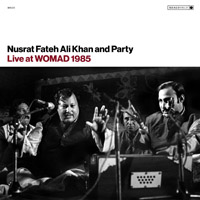
|
NUSRAT FATEH ALI KHAN & PARTY
LIVE AT WOMAD 1985 (RealWorld CDRW225)
Anniversaries pop up all over, deaths, half-centuries and other commemorations remind us of passing time. Woodstock was 50 years ago. I was coming of age in my own way, hitchhiking from the UK to Istanbul with a five pound note sewn into the lining of my jacket. I slept in barns and abandoned cars. The further East I got the more my long hair excited attention, until the problem was solved by the Bulgarian border guards who cut it for me since they did not want any Anarchists coming into their country. I sold my jeans in Sofia to rent a room and buy food, and depended on the kindness of strangers to get by. I got my share of big festivals with tens of thousands of attendees, like the Rolling Stones in Hyde Park after Brian Jones died, and the debut of Blind Faith in the same spot. WOMAD, the music festival started by Peter Gabriel, is celebrating many things (including 30 years of their RealWorld record label) but notably the first appearance of Nusrat Fateh Ali Khan before a Western audience in 1985. He shared the bill with New Order, Rochereau, The Fall and many others. It's also 22 years since his passing. But it's hard to believe it was 15 years between Ravi Shankar breaking out in the West and the emergence of Nusrat. But while they both come from the Indian subcontinent they could not be more different. Ravi was a classical musician who showed a generation of rock guitarists what the art of improvisation was really about. Nusrat had a gift from his God, making him arguably the greatest singer of the second half the twentieth century. He too reveled in spontaneous improvisation, using his vocal chords instead of strings. After WOMAD Nusrat was in demand by Western acts who felt they could improve on the simplicity of his music -- basically singing and handclaps with a harmonium for continuo. At the time RealWorld recorded Love & Devotion in the studio, but decided to overdub mandolin and guitar. Soon after that the remixing began, by Michael Brook, Massive Attack, Dhol Foundation, and others, culminating in the posthumous remixes by Gaudi. Essentially there's nothing new here, if you already have some of the scores of great live Nusrat recordings. But if like me you don't mind listening to another live version of "Alla Hoo" or "Haq Ali Ali" then you should indulge yourself in these twenty-minute versions with extensive vocal improvisation and the dramatic ebbing and flowing of religious fervor that is palpable. ·
|
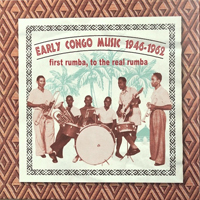
|
EARLY CONGO MUSIC 1946-62
FIRST RUMBA TO THE REAL RUMBA (El Sur Records)
This two-CD set comes with an 86-page bilingual book, richly illustrated with labels and artist photos and includes notes on the lyrics of the songs. Yoshiki Fukasawa is the compiler and author of this outstanding compilation. Apart from Flemming Harrev's discographies on afrodisc.com the only generally available information on the history of early recorded music in the Congo comes from liner notes, such as Planet Ilunga's albums or Sterns' few sets of Congo classics, and Gary Stewart's indispensable book Rumba on the River (Verso). As Fukasawa-san says in his introduction: "Reliable written information is crucial but listening to and feeling the actual music is most important of all to understand the popular music of the time." So he set out to collect the largely lost recordings of this era and this is where he made his first startling discovery. The earliest "rumba" records he found from Congo -- Orchestra Odéon-Kinois on the short-lived Olympia label in 1946 -- are a brass band! At the same time early guitar recordings by Wendo (widely traveled as one of the first "pop stars" of the Congo) were also labeled "rumba," so Fukasawa-san came to the brilliant conclusion that the term implied popular or cool music, and not a genre or rhythm at all. In fact it's not until African Jazz in the early 1950s, that anything resembling a clear Cuban "cover" is detected. Highlife, brass band and palm wine music were earlier imports, coming with sailors and workers from Sierra Leone and Ghana. You can also spot elements of calypso and church music in the roots. Cuban music arrived with the gramophone in the 1930s and "rumba" was embraced for its familiar African rhythmic underpinnings. Real rumba, he tells us, is a result of Jhimmy the Hawaiian (Zacharie Elenga) and Paul Mwanga bringing a pop sensibility to the music to appeal to the youth, and adding what is essentially "animation" within the song. Sadly the two fell out, Jhimmy gave up music and from the core of musicians surrounding him at Opika, African Jazz was formed.
The first disc shows the influence of palm wine and other styles on the development of the music. Traditional thumb piano still has a role in the rapidly modernizing country (just as it resurfaced with the electrifying "Congotronics" artists captured by Vincent Kenis a decade ago). Antoine Mundanda of Likembe Géant fame turns up with the unique whistle and likembe piece "Mabele ya Paulo." Of course there is a parallel with the finger-picking guitar style. This song about singer Paul Kamba's girlfriend celebrates the traditional within the modern urban context. Kamba was popular in both capitals across the river and the song combines conflicting even contradictory elements of the social experience, as commentators were keen to point out, this is the same sentiment that prefers imported beer to the local brew. This pseudo-sophistication also leads to rejecting domestic musical forms in favor of foreign ones. There's a nice 1946 solo piece from DeSaio who influenced DeWayon, Franco's teacher. As he finishes singing, leaving only his accompaniment, he calls out "Guitar!" I had to laugh. We hear Wendo, d'Olivera and Bukasa individually. They later formed the first supergroup in Congo: Trio BOW. Another big star in the '50s was Adou Elenga. Elenga's controversial political song "Ata ndele" was banned; he also had huge hits with "Tout le monde Samedi soir" (a cover of a popular Nigerian highlife song, "Everybody loves Saturday night.")
We progress chronologically to the point where the real rumba starts breaking out, on tracks like "Baye-baye" by DeWayon with Wendo and a group that would become Watam a year later. This is followed up with a powerhouse from Wendo: "Bakosi liwa ya Wendo," a "Peanut Vendor" cover with piano in the mix (according to the label: "3 guitares, piano, contrabasse & jazz" -- Jazz actually refers to a scraper!). "The Peanut Vendor" returns on disc 2 with a track from Gobi, sung by Lucie Yenga, backed by guitar, organ and sax. And while this influential Cuban number permeated all Africa, it is clear what we have been calling rumba roots is really a pan-African sound involving highlife, maringa and many indigenous folk influences. So Yoshiki's point is well-taken that "rumba" on the label does not refer to rumba in the grooves. We simply did not have a big enough sample of early Congolese records to judge accurately.
If the first disc was the chrysalis, the second disc is the butterfly. On the second disc we note the personalities of Franco, Essous, Kabasele, Rochereau (with the magnificent "Catalina"), Tino Baroza and others emerging. Belgian sax player Fud Candrix brings real jazz to the studio and pushes the core members of African Jazz into exceptional jamming. And there are other discoveries here like Roger Salmson with Dynamic Jazz (Ngoma 1958), on "Ami amore bonita." There's a great clipped guitar solo by Dumana, and lyrical clarinet evocative of early OK Jazz. Roitelet and Le Beguen Band give us "Sala mbongo," a cha-cha, also from 1958 and also on Ngoma, that suggests Rock-a-Mambo. Of course the make-up of these groups was fluid. Core members from Rock-a-Mambo and OK Jazz, who had previously worked together in 1954 as Negro Jazz, reunited on Independence as the Republic of Congo broke from France. They moved back to Brazzaville to form the mighty Bantous de la Capitale, and the rest, as they say, is history.
This monumental achievement by Fukasawa-san not only combines insightful scholarship with well-chosen music but is sequenced in a way to aid in our understanding. It constitutes a key document in the history of the development of Congolese popular music. [abridged from full review which appears on the Congo Classics part 2 page] ·
|
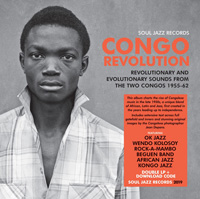
|
CONGO REVOLUTION
REVOLUTIONARY & EVOLUTIONARY SOUNDS FROM THE TWO CONGOS 1955-62 (SoulJazz)
During the struggle for independence, roughly the period covered in this new double LP set, the established bands in the Congo were African Jazz, OK Jazz, Beguen Band, and Rock-a-Mambo. Congo Revolution dovetails neatly with the recent Early Congo Music 1946-62 discs, and neatly sidesteps the circular discussion about who was the first Rumbero in Congo. Instead of discussing the individual songs specifically however, the compiler gives a social, economic and political history of the music to provide context (while touching on important topics like censorship and royalties). The social history is important to lay out because the two main camps of Congolese popular music of that era, OK Jazz and African Jazz, were very different. Franco's group were more streetwise, not exactly hooligans, but identifying with the Indoubil, or "Hindu Bills", who were marginalized kids into the escapism of Bollywood and Western movies (Buffalo Bill Cody, Wild Bill Hickok), and who created their own patois, while the more sophisticated group at Esengo were "évolués"-- westernized, educated and politically savvy members of the African middle class, a buffer group created by the Belgians with one hand out but their foot still on the neck. The évolués were pan-Africanists and helped get Patrice Lumumba elected Prime Minister, though the world was not ready for this surprise outcome of free elections. Some members of the group, notably Dechaud and his brother Nico, tried to remain apolitical while OK Jazz and most others sooner or later embraced the dictator Mobutu (with a little coercion). So the social dynamics are certainly an important but hitherto largely neglected factor in the music.
I agree with the compiler that Rock-A-Mambo is one of the outstanding bands of the period: they had a fluid membership including Nico, Dechaud and Tino Baroza on guitar, later replaced by Papa Noel, plus Nino Malapet and Jean-Serge Essous on horns who later formed Les Bantous de la Capitale. As the compiler writes, "they were without doubt one of the most adventurous, creative and free-thinking ensembles to take the sound of Leopoldville across the continent." Their fusion of African and Latin rhythms set the stage for many subsequent outfits.
Armando Brazzos, contrabassist with OK Jazz, leads off with a pair of Cha cha chas: "Del Zombo" and "Sois sage amour." These are good but safe (and familiar) entries, but then we are plunged into the boiling pot with a steaming merengue in Kikongo called "Kumavula Tubakueto" by Edo & OK Jazz. Like Paul Mwanga, Edo adopts a traditional rhythm here. I am guessing Vedette Jazz, a mainstay of the early Ngoma label, were among the Hindubils: their bassist was called Lasso! Also on Ngoma, Beguen Band gets us going with the catchy "Yo me moero" (and the inevitable rhyme: "Yo te quiero"). Their singer was Tchade, their guitarist was Delafrance (later of African Fiesta), saxophonist Maproko, also of Rock-a-Mambo and Vévé. Dewayon & Conga Jazz deliver "Nalingi na ngai kubala te," another storming track. "La belle Lucie Botayi" by Kongo Jazz (composed by guitarist Raymond Brainck) is another of the stand-outs. "Flowers of Luckness" (or "Luckyness") by Rhodesian Isaac Musekiwa, sung in weird English by Kabasele, is called a "Swing anglais" on the Olympia disc -- I'd be tempted to call it skiffle. Musekiwa had started at Esengo but feeling outnumbered by the three fantastic saxmen already there, took his sound to OK Jazz over at Loningisa. I think that's Belgian Gilbert Warnant on the Solovox playing the keyboard part. "Les Voyous," a romping stomping merengue in Lingala by Nino Malapet, is another Rock-a-Mambo gem. Tino Baroza cranks up his guitar to create a buzzing distortion on this, and for contrast we also hear Nico's wobble on another shimmering merengue. Since the French word "Voyous" means "hooligans" I would really like an explanation here. Is it a throwdown to the rival camp at Loningisa? To reinforce the theme of social consciousness there are three political tracks salted in: "MNC Uhuru," "Ngonga Ebeti Independance," and "Vive Patrice Lumumba." Without being didactic this set gives us a delightful tour of the two Congos as they emerged from colonial servitude into the modern world. There are a lot of minor typos in the booklet, which is a shame, but crucially there are many, many fantastic photos, most taken by Revue Noire journalist Jean Depara, presented large for full appreciation. [abridged from full review which appears on the Congo Classics part 2 page] · |
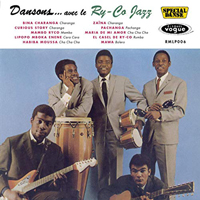
|
LE RY-CO JAZZ
DANSONS (Radio Martiko/Disques Vogue)
This collection of EP tracks and 45s from the legendary Ry-Co Jazz was reissued at the end of 2018 by Radio Martiko in Belgium. Legendary of course implies that though they were big in their day their records became increasingly hard to find (& hear) as collectors bought them up, and today they are even scarcer. Ry-Co Jazz were a mainstay of the French Vogue label in the 60s. Formed by Henri Bowane at Loningisa studios in Leopoldville in 1958, their name was an abbreviation of "Rhythme-Congolaise." They went on tour to newly-formed Central African Republic and some members remained for 13 years! Exceptional guitarist Jerry Malekani joined them in Bangui in 1959. After a split from Bowane, four key members, singers Freddy Nkounkou & M'bilia Casino (also on congas), Jerry, and bassist Panda Gracia went to Nigeria and ended up in West Africa bringing the gospel of Congolese rhythms for four years, and recording in Dakar where they were heard by a producer from the French label Disques Vogue, who invited them to Paris. Cuban-influenced Mambos, a bolero and pachangas abound. You can hear the early OK Jazz and Rock-a-Mambo sound on tracks like the cha-cha "Maria de mi Amor" (from Vol 5, 1961). The bassist fell in love and stayed in Dakar; in Paris saxophonist Jean-Serge Essous joined up. He is heard on clarinet on "El Casel del Ry-Co," sung in Douala by Camerounian bassist Jean Dikoto Mandengue, from Vol 23, 1966. On tour their set list grew to include tunes like the Nigerian hit "Bottom Belly", and Dizzy Gillespie's "Wachi wara." Significantly they next went to the Antilles in 1967. Their seven year stint there, adding calypso and cadence (or "Kadans" in kriyo) to their repertoire, had a huge impact on the locals and some of their sidemen formed Kassav, the kings of zouk music. Their importance is outlined in Gary Stewart's book Rumba on the River, where he notes they returned to Paris to record and Essous went back to Les Bantous, to be replaced by Manu Dibango for a further North African tour. But their music evolved too and the Martiniquan style which permeated their sound in the 70s had a direct influence on the Paris recordings of Eddy Gustave -- check anything on the Eddy'Son label such as recordings by Pamelo Mounk'a, Théo Blaise, Master Mwana Congo or Sam Mangwana, for what is best described as the "Antillean lilt." This selection, of 10 tracks from the 100 or more they recorded for Disques Vogue, covers the early 60s before their Martinique trip. A sequel is promised, but this is their golden sound and, to my ears, much more coherent than the RetroAfric disc Bon Voyage which was the last anthology of their work, over a decade ago. ·
|
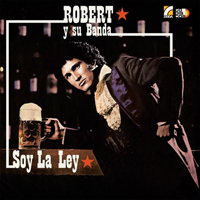
|
ROBERT Y SU BANDA
SOY LA LEY (Vampisoul VAMPI 190)
In the great salsa boom of the 1970s, New York had Fania Records and Colombia had Discos Fuentes. But that's not the whole story as you can imagine. And obscure as they may be, Colombia's other salsa labels such as Codiscos managed to pack the dance floors -- without Fruko as their A&R man. This disc, selected for reissue on vinyl by Vampisoul, is a fine example of salsa dura. The leader, Roberto Fonseca, was as much part of the costeño cumbia movement as he was into salsa but on this album he waxed the first recording of "Rebelión" by his childhood friend Joe Arroyo, called "El Mulato." Joe first recorded it with Fruko, but it was shelved, as Fruko thought the vocals were sub-par. After Arroyo went solo he redid it backed by La Verdad, in a new arrangement by Michi Sarmiento, and it became a global smash. Here it is a rough gem, with a cumbia feeling, especially in the bass. Joe Arroyo also wrote the title track of Roberto's album, "Soy la ley (I am the law)." The other songs are mostly covers too, of originals from Mexico, Cuba and Puerto Rico, but blend into the familiar Colombian groove, hitting on the brass with congas, timbales and cowbell. Always more cowbell! If you play this disc backwards, i.e. side two first, you get caught up in the movements of each style, and the excitement of a really hot recording session. The romping cumbia "Hijo de gitana (son of a gypsy)" reminds me of the Latin Brothers. Roberto's voice recalls Héctor Lavoie which is probably why he was so beloved by the fans in Barranquilla and Medellín.
·
|
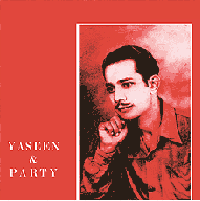
|
My knowledge of the taarab music of Coastal Kenya is quite limited. It's a simple music, occasionally moody and haunting, comprising vocals with oud, percussion, and sometimes violin or a taishokoto, a Japanese zither played with typewriter keys! The influences are Egyptian orchestras and Indian popular film music but, as John Storm Roberts said, the one missing ingredient seems to be Africa. Military style dance bands had been around for 50 years when the first recordings were made in East Africa but the populace wanted to hear taarab. Some musicians from Zanzibar and Mombasa even went to Bombay to record for HMV in the 20s and 30s. And despite being in the military, Yaseen Mohammed was drawn to popular music from an early age and began recording. He developed a working relationship with M. J. Shah of Assanand's record store where he worked to get access to the latest releases, and they began recording him in various groups including duets with his wife. Accordion, flute, and another novelty, electronic keyboard (Clavioline) and ney would be introduced and though the songs were 3 minutes long, in performance (typically at weddings) they would loop them and go into an extended jam. There's a lot of variety and many surprises on here (including a taarab "Twist and shout") and some novelty numbers such as "I'm going to Liverpool: I'm gonna buy a football pool, I'm gonna be rich!" The first two tracks were on John Storm Roberts' Songs the Swahili sing, and "Kula ajae na shari" was on his Africa Dances compilation, otherwise it's a novel, broad selection of great and carefully restored tunes from the 60s and 70s. · |
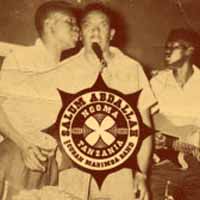
|
SALUM ABDALLAH & CUBAN MARIMBA BAND
NGOMA TANZANIA (Domino Sound)
Music is nothing if not circular. From 78 rpms to 45s to cassettes to CDs and back to vinyl, it revolves, just as the chords cycle round and round. Inspired by 78s of cha cha cha and other Cuban music imported into Africa in the mid-1940s, teen-aged Salum Abdallah wanted to be a musician. His first home-made guitar was found and destroyed by his religious father who had other plans for the lad, but once he started a band and they performed to acclaim at his sister's wedding, it was clear where his future lay. A scout for Mzuri records came to Morogoro, Tanzania, to hear the young band, set up a single mike and captured their first recordings for pressing back in Mombasa. Salum's father was from Southern Arabia and in his strict upbringing the young Salum had to learn to chant the Koran, the intonation of which also left traces in the singers of coastal taarab. The marimba of the band's name refers to the thumb piano or mbira played in local ngoma (dances). The guitar playing reflects this plucked style. Thus was born the blend of traditional Tanzanian music, with arab influences and the over-riding flavor of the Cuban cha cha played on clipped, chippy guitars instead of violins and pianos, which started to flourish all over East Africa. A South African version of the twist also permeated up the coast with its bright bubbly beat and is covered here in "Beberu." The Mzuri 78s continue to be issued in Kenya during the early 60s and eventually arrived in the West via cassette tapes. In 2000 Dizim records issued a CD of 22 songs by Cuban Marimba Band collected and remastered by Werner Graebner, the leading authority on Tanzanian music. Now with the strange precipitous return to vinyl we have an LP of 12 tracks, including 3 borrowed from Graebner's comp, put together by Michael Kieffer, who was the sound engineer for John Storm Roberts' estimable Original Music label. This is the roots of the famous muziki wa dansi or Tanzanian dance band sound, later heard in the work of Mbaraka Mwinshehe and Super Volcanoes and also Atomic Jazz, NUTA Jazz, Maquis and Mlimani Park, to name the best-known. ·
|
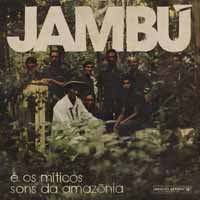
|
Sit back and relax and enjoy the latest episode of crate-digging adventures with Samy ben Redjeb. Having exhausted West Africa, for now, Samy is back in the Brazilian rainforest from whence came the exciting Mestre Cupijó compilation from Analog Africa six years ago. Jambú is a stimulating plant, akin no doubt to coca, which promotes the appetite; it's also added to the deadly distilled sugarcane hooch known as cachaça. This album will stimulate your ears. Hits of tropical psychedelia mix with choro, samba, merengue, even the lambada. Pure percussion backs all these tracks and there are no synths, so none of the cheezy disco-tinged stuff that was coming out of Europe and Africa in the late 70s penetrated the rainforest. The compelling "Coco da Bahia" by Pinduca is based around an insistent riff that reminds me of "Ode to Billy Joe," Bobbie Gentry's 1968 hit. But this one has no bridge. "Carimbó da Pimienta" -- the track that started Samy on the quest for the story of this music from Belém and environs -- has a lot of what I'd call Angolan feeling. And again he has done a thorough job, not just in tracking down the tunes, but finding the artists, many of them surprised that someone from so faraway had come to interview them and find out their story. Another Carimbó track, "Lundun da Yaya" by Grupo da Pesada jumps off the album, and makes you want to put it on a loop. There's a great backbeat on some big zabumba bass drums, shakers and a wobbly horn chorus. He ends with a wild live track from Mestre Cupijó which is thoroughly engaging in its sloppiness. Triumphant. ·
|
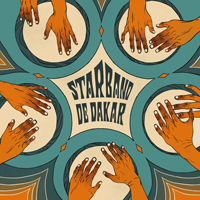
|
STAR BAND DE DAKAR
PSICODELIA AFRO-CUBANA DE SENEGAL (Ostinato)
A new vinyl LP from Ostinato Records of New York, featuring psychedelic Senegalese music from the golden age, focused on Latin rhythms. Why, I will take a large dollop of that, thank you. If you are a Star Band fanatic like me you will have their dozen albums showcasing the acid-washed guitar of Yakhya Fall, Cuban rhythms mixed into the mbalax, and a roster of singers, including Youssou Ndour, Pape Seck and Laba Sosseh who went on to stardom with other bands including Etoile de Dakar and Number One. Other alumni include guitar wizard Barthélémy Attiso, singer Balla Sidibe and saxophonist Issa Cissoko, who left to found Orchestre Baobab. Dexter Johnson plied the sax, before he and Laba Sosseh left to form Super Star de Dakar and Estrellas Africanas. The main Star Band discography is here.
For the record the tracks are "Guajira Ven," written by Trio Matamoros, from vol 4 (sung by Laba Sosseh), "Mysterioso" which was on Vol 12, originally a hit for Dominican duo Cuco & Martin Valoy who performed as Los Ahijados, "Andado" from vol 10 (sung by Papa Fall), "Mariama" from vol 9, "Danguele Fasso" from vol 8 (sung by Papa Fall), and "Le Lolay" which appeared on vol 3 (again sung by Laba Sosseh). Those with disposable income will want the vinyl which comes with a 12-page booklet, however there is no noticeable improvement in the sound over the poorly mastered originals. Strung together, these tracks which are their most Latin ones, make a great set. "Danguele Fasso" is a Wolof rewrite of "Cambia el paso (o se te rompe el vestido)" i.e. change the step or you'll rip your dress -- the lyrics from "El paso de Encarnación" by Antonio Machin, popularized by Orq Aragón, and then by Larry Harlow of Fania All Stars, a classic jam in any language. ·
|
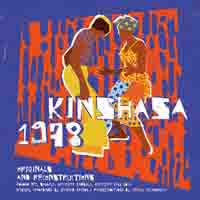
|
KINSHASA 1978 (ORIGINALS & RECONSTRUCTIONS) (Crammed CRAM294)
Here's a welcome reissue of what can truly be regarded as a seminal album of folkloric music which crossed over into the mainstream and created a slowly building titanic wave, beautifully realized as the Congotronics series produced by Vincent Kenis. In November 1978 Bernard Treton & Guy Level of OCORA (French national radio), made some field recordings of thumb piano music in Kinshasa. Four different groups were involved (one with accordéon instead of likembes), each representing a different ethnic group, but all of them had come from their homes in the bush to the capital city and decided they needed electricity to make their likembes audible over all the traffic and urban din. They took car batteries and rigged up buzzing contact mikes and added percussion out of found metal in the same auto wrecking yards (a "gonguist" and what remains of a cymbal, said the original notes). A double cassette (those were the days) came out with 4 half-hour tracks in 1987. Then two years later a CD with abridged versions of two of the tracks appeared. Now Crammed has gone back to the source tapes and taken different slices of music (some of it overlaps the issued parts). Konono No 1, who came from Angola, now move to prime place with a 28-minute opener (it was a minute shorter on the CD and a minute longer on the cassette). This wild epic jam was apparently played in the morning to allow the vocalists to sleep, according to the original notes. Yes, sleep, while the stacked 175-watt amps filled a massive stadium with a wall of sound. The vocalists, presumably unable to rest, yell through loud-hailers, so their voices are as distorted as the likembes.
Bana Luya is a bit more restrained, with actual pauses or breaks in the music. Here we get 15 minutes of them as opposed to 23 minutes that were on the OCORA CD. They are Baluba from Eastern Kasai province. In addition to a bass and two treble likembes playing cyclical patterns they have two-tone whistles. Beer bottle percussion and metallic maracas augment the performance. Sankai, also from Eastern Kasai, is the mellowest of the four acts. Bottle and tam-tam accompany the two likembes, the players of which sing into their instruments so the pick-up mikes catch their voices too. They traded grass for better quality Beyer microphones, brought in by a Peace Corps worker from the US. In contrast the Bambala are serious folk who do not play in bars: they only play for family ceremonies, baptisms, weddings and funerals. They feature a jaunty accordéon and various home-made percussion instruments. 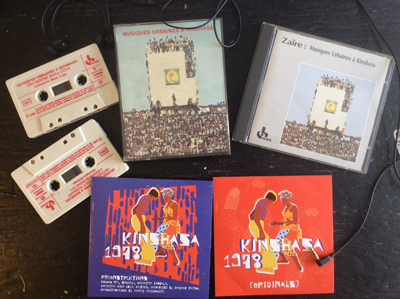
But wait, in addition to the new CD, there's a bonus album of four disco remixes by Martin Meissonnier, who has worked with Fela, King Sunny, Manu Dibango and others. We already heard Konono guesting on "Earth Intruders" from the Volta album by Björk in 2007 and to me this sounds very much in that mode (although there were half a dozen alternate mixes of Björk's song). He starts by choosing a sample to loop and running it through a phaser while adding extra oomph to the percussion with a drum machine. But then the likembe patterns are already loops. The Sankayi track is called "Il ne faut pas intervenir" (Do not intervene) which is ironic, no? · |

